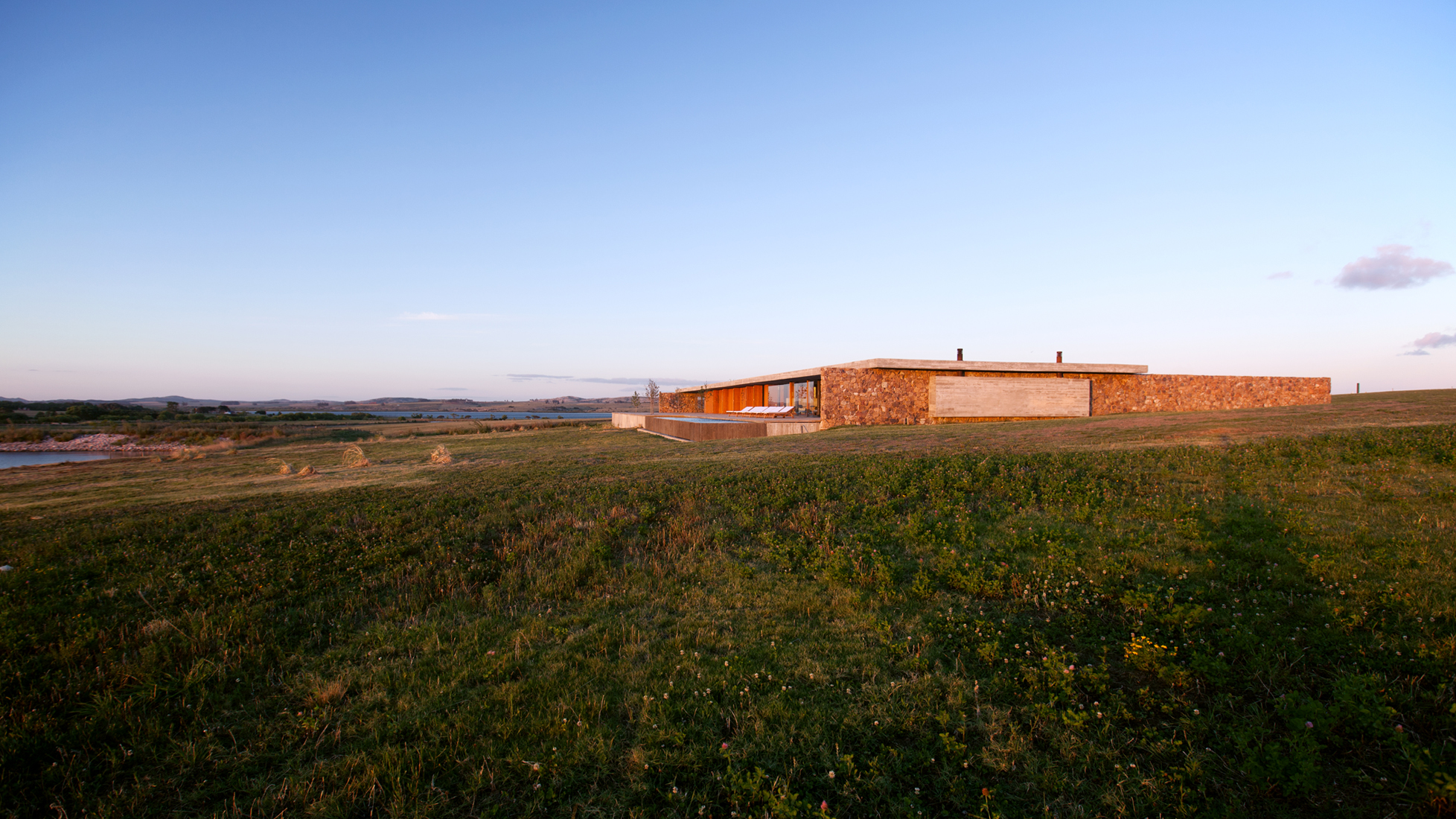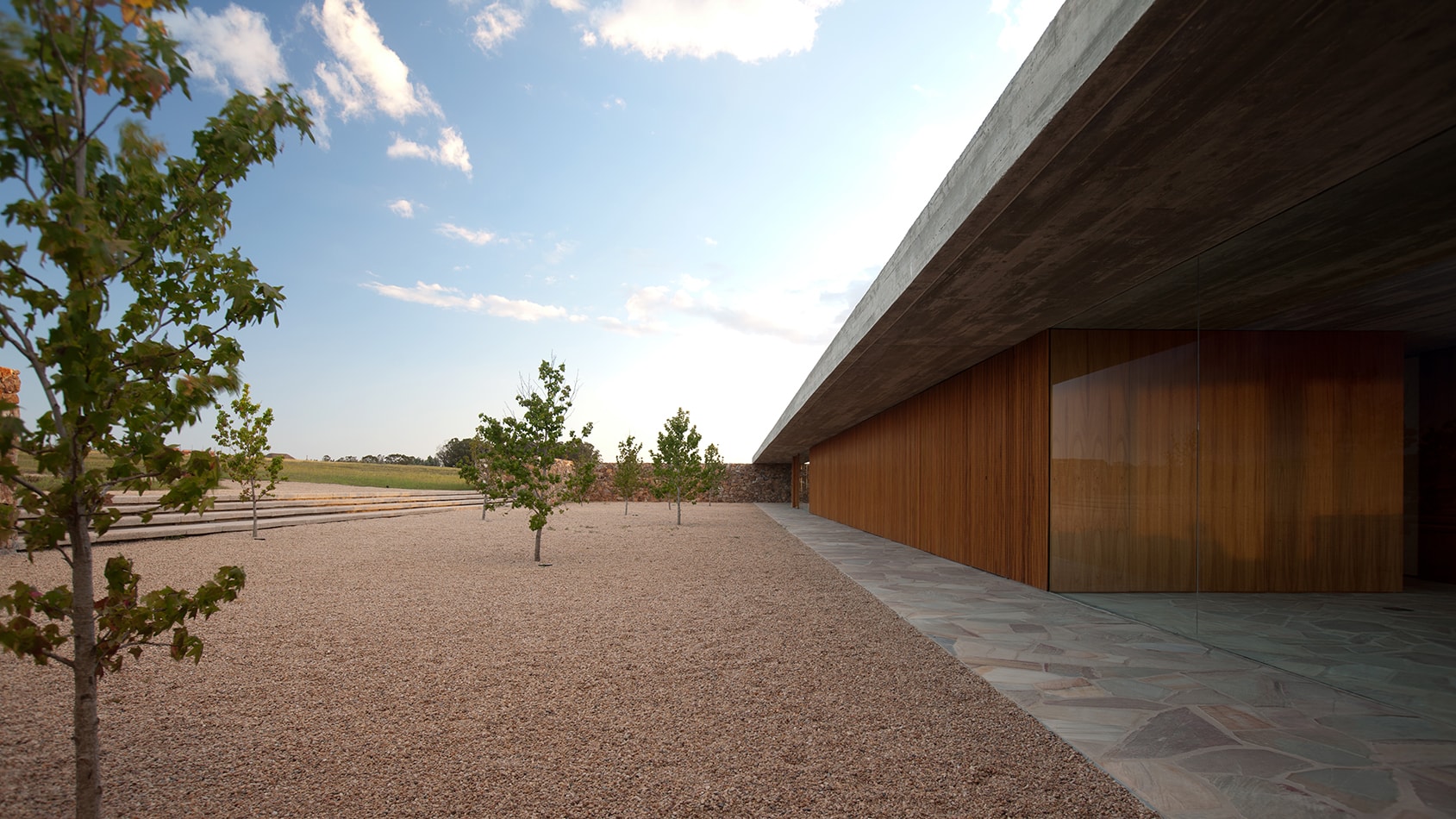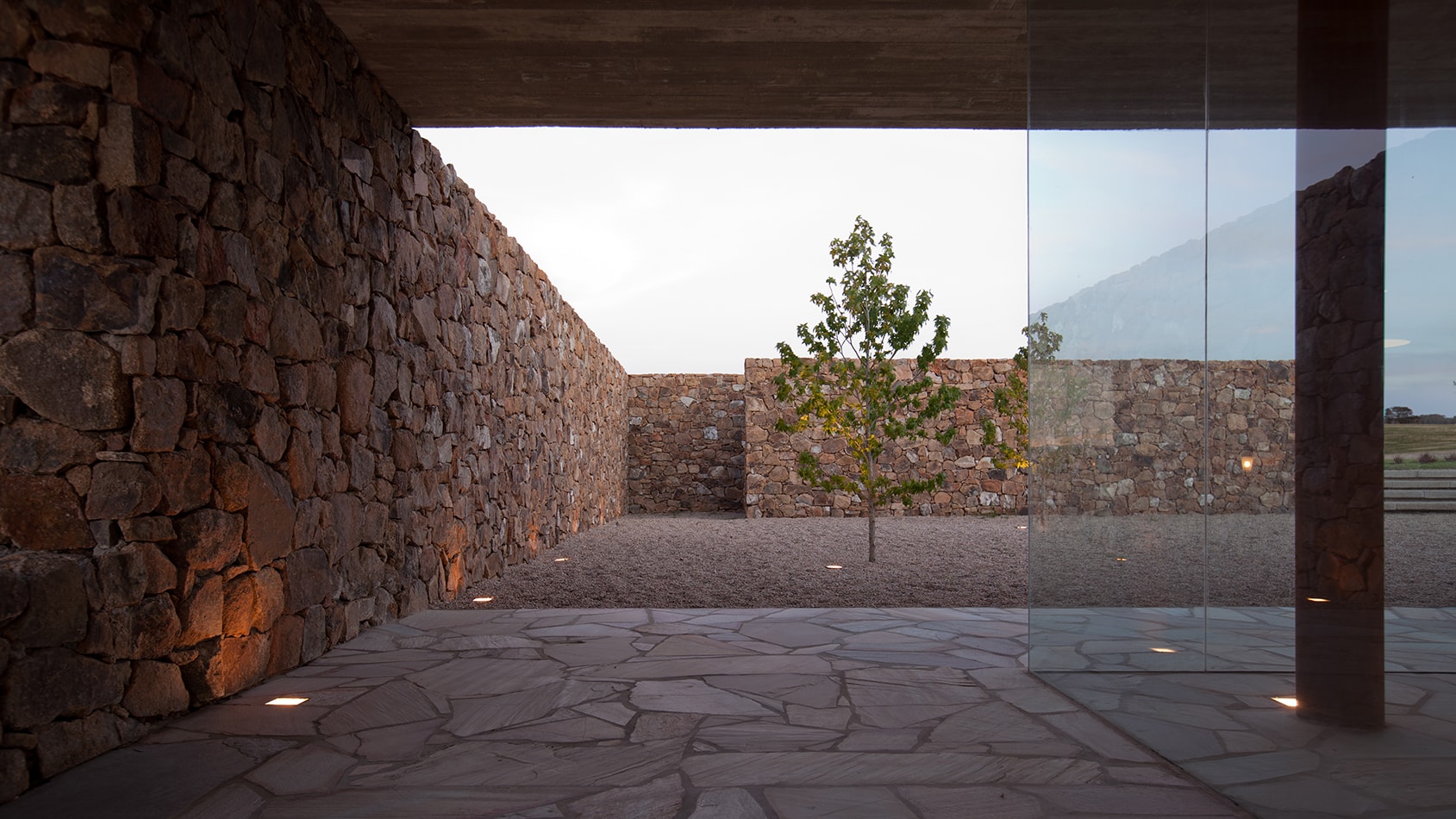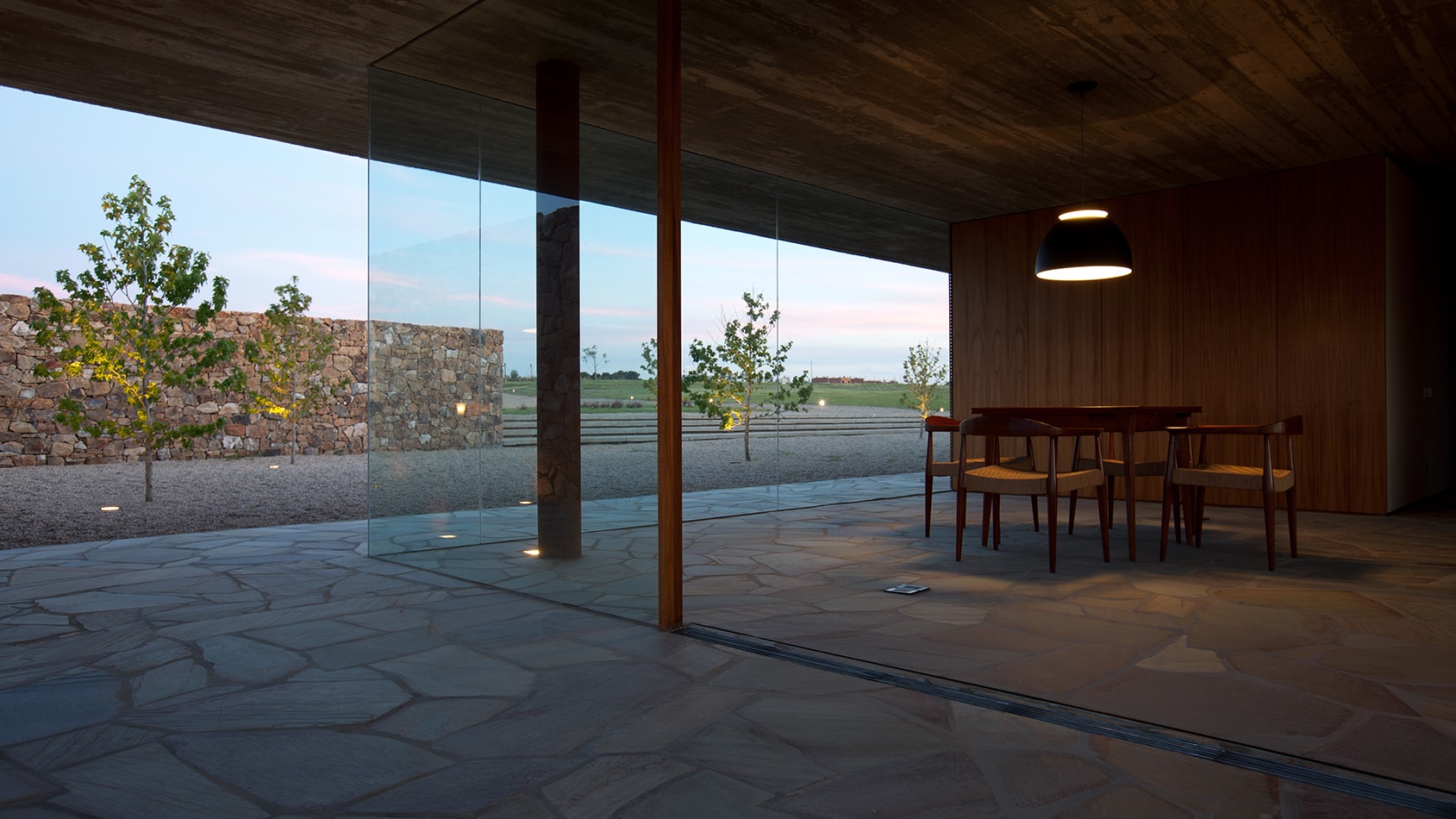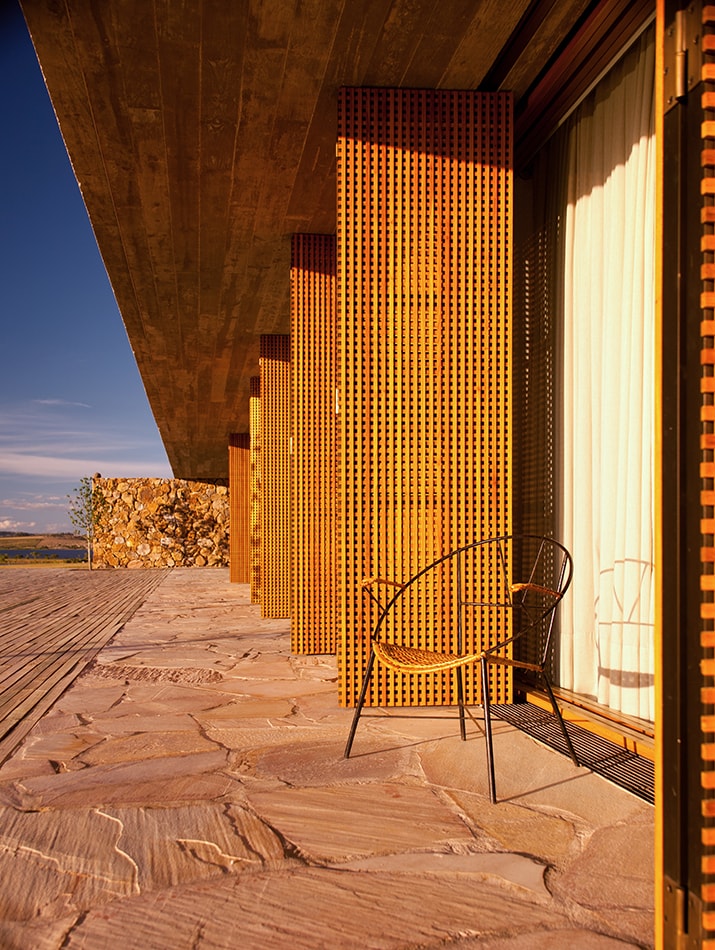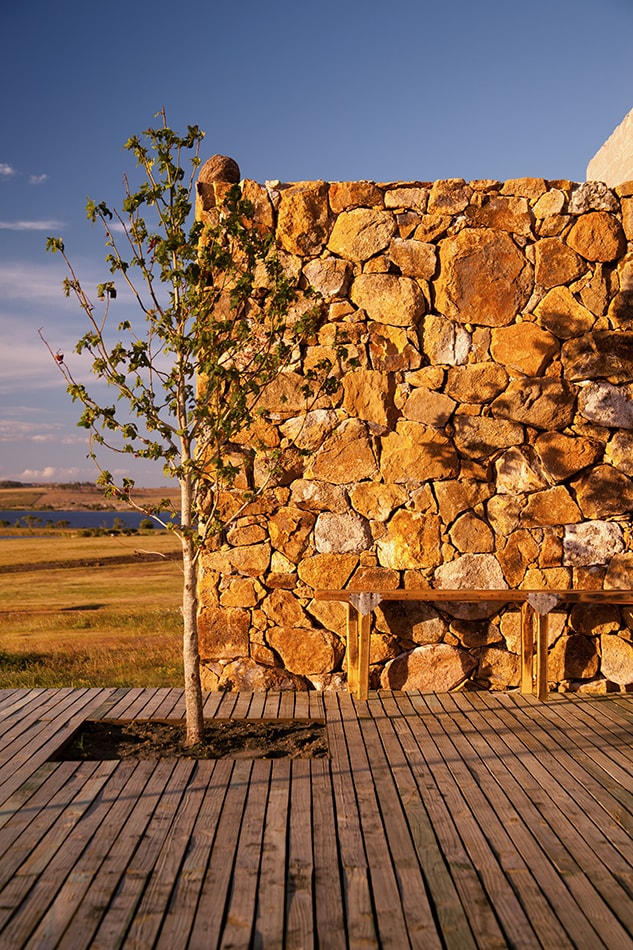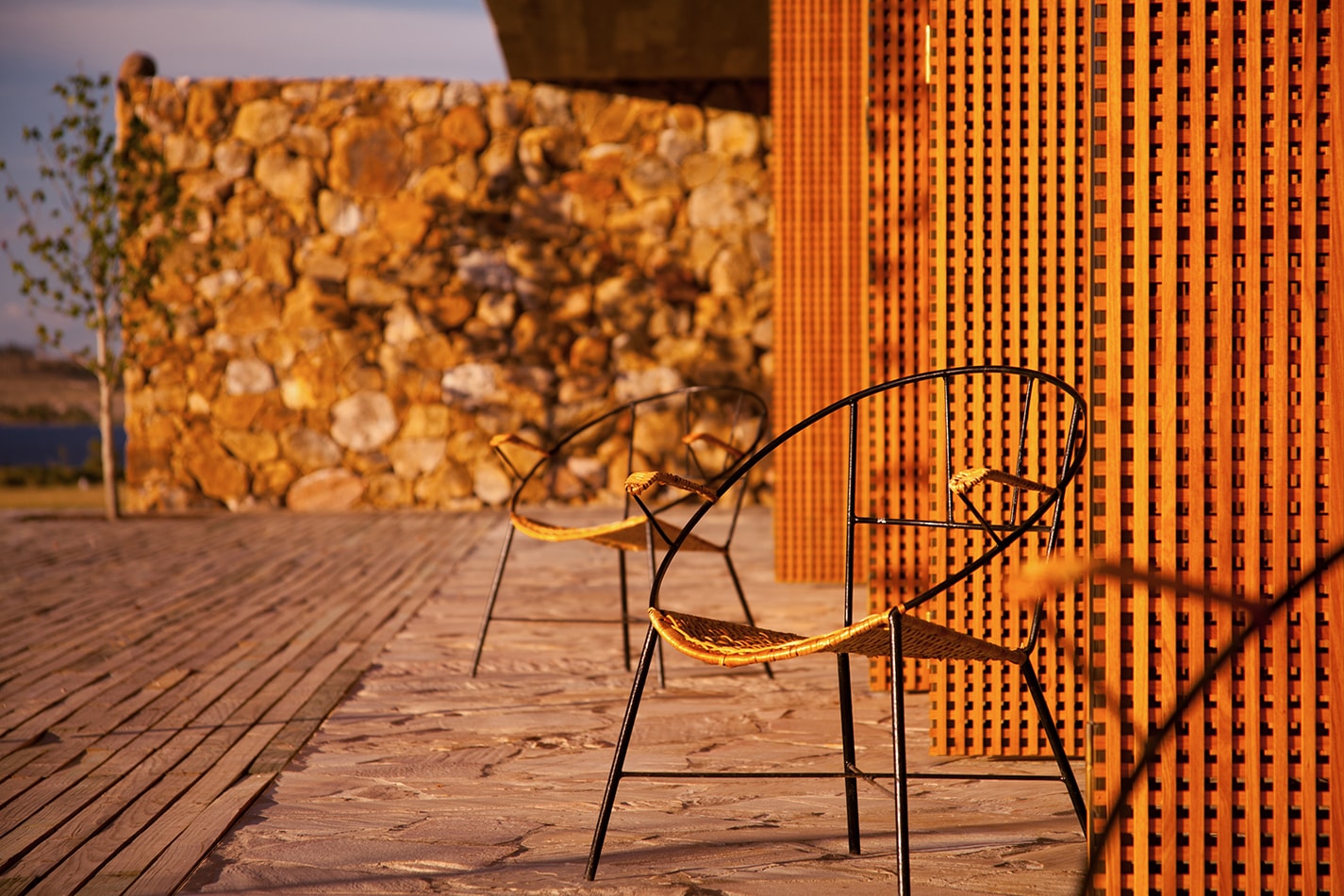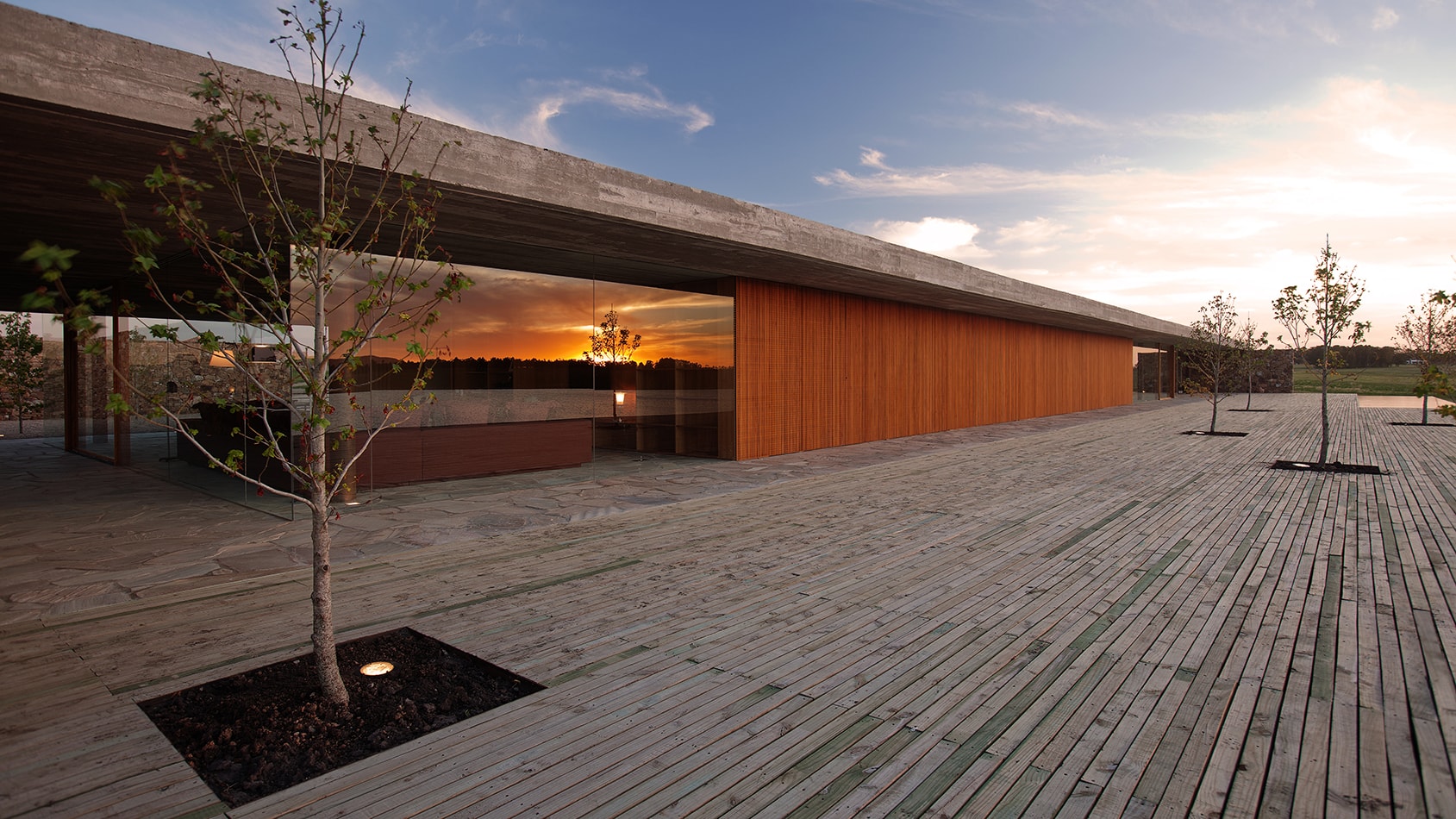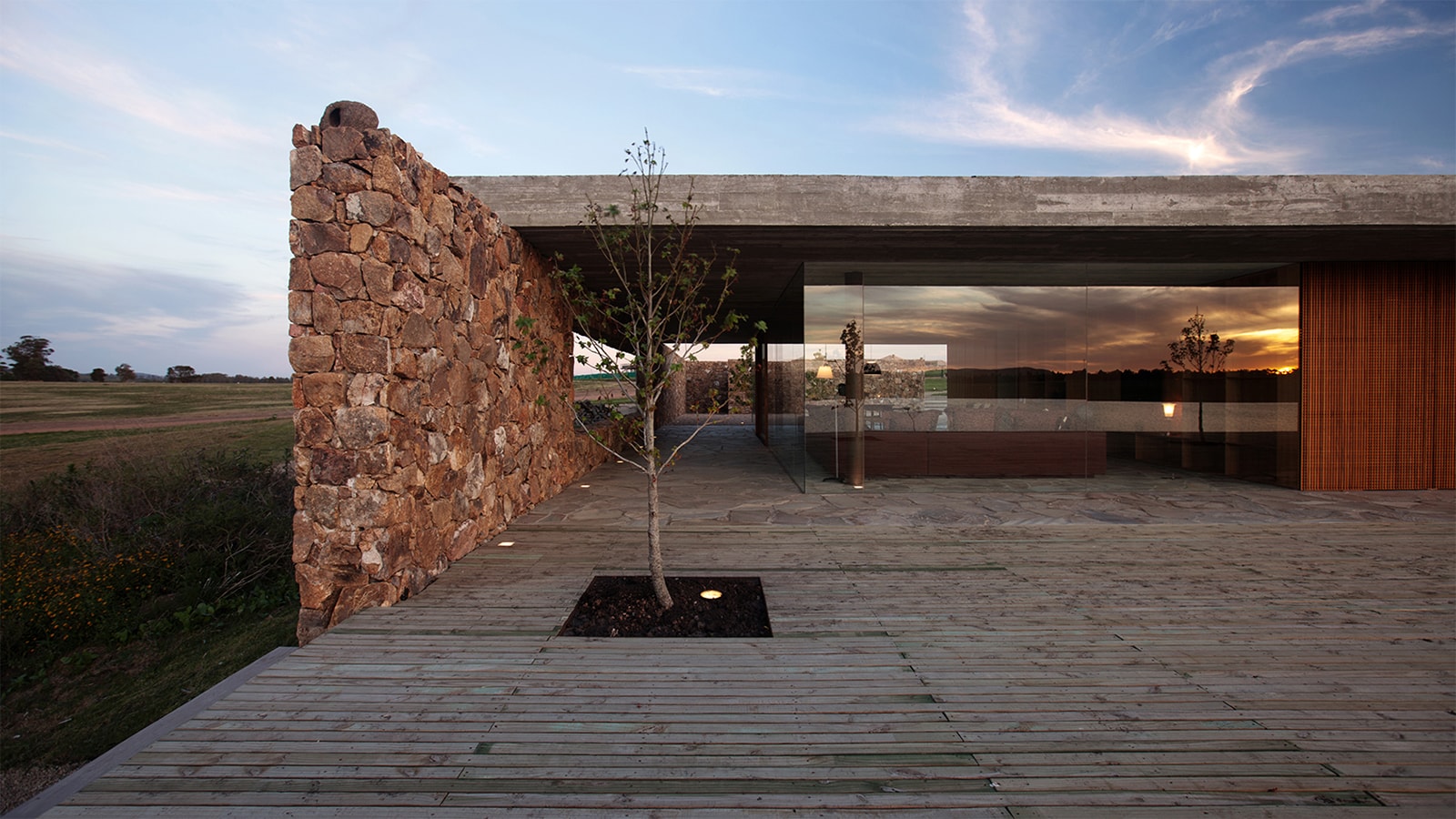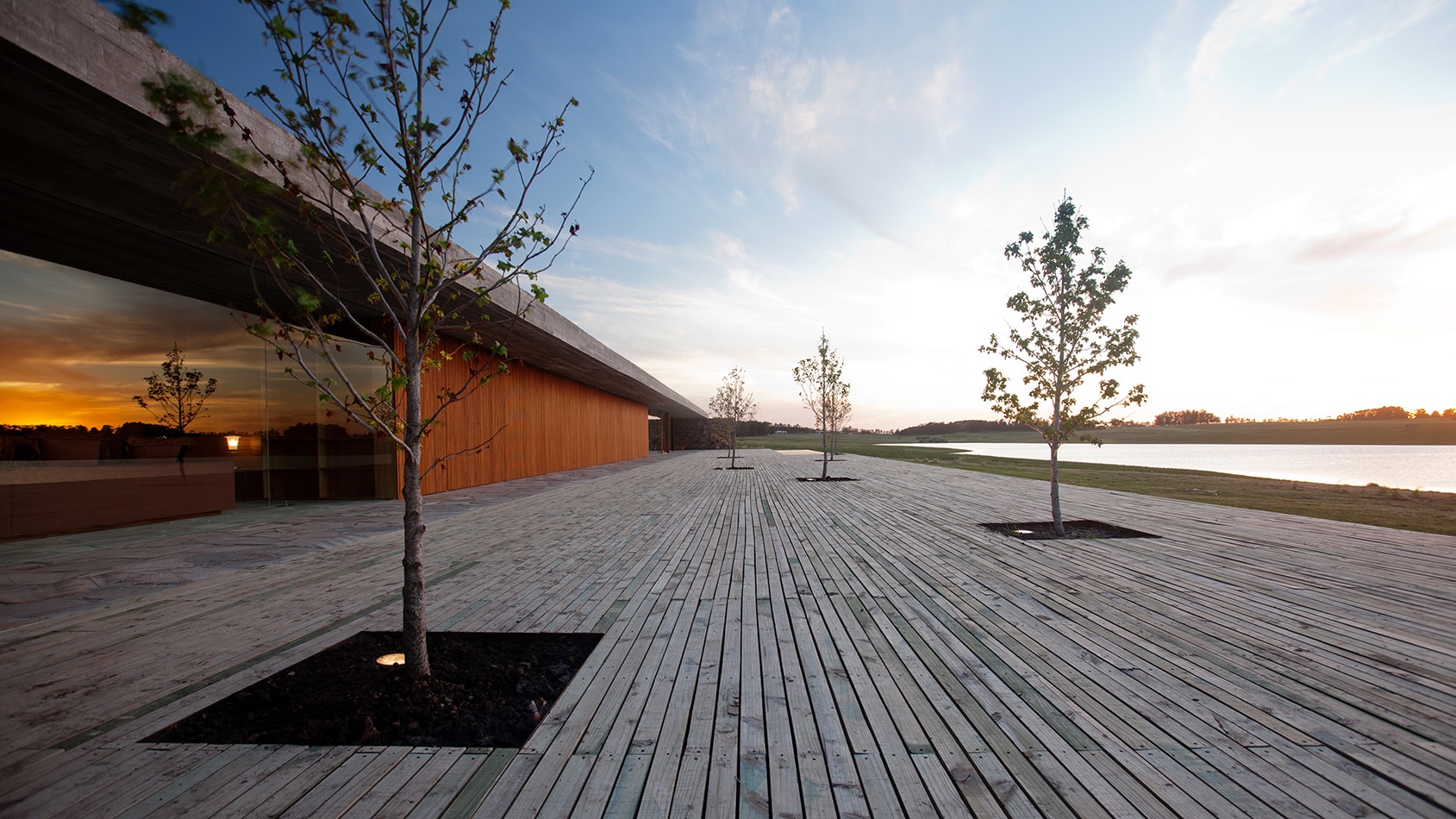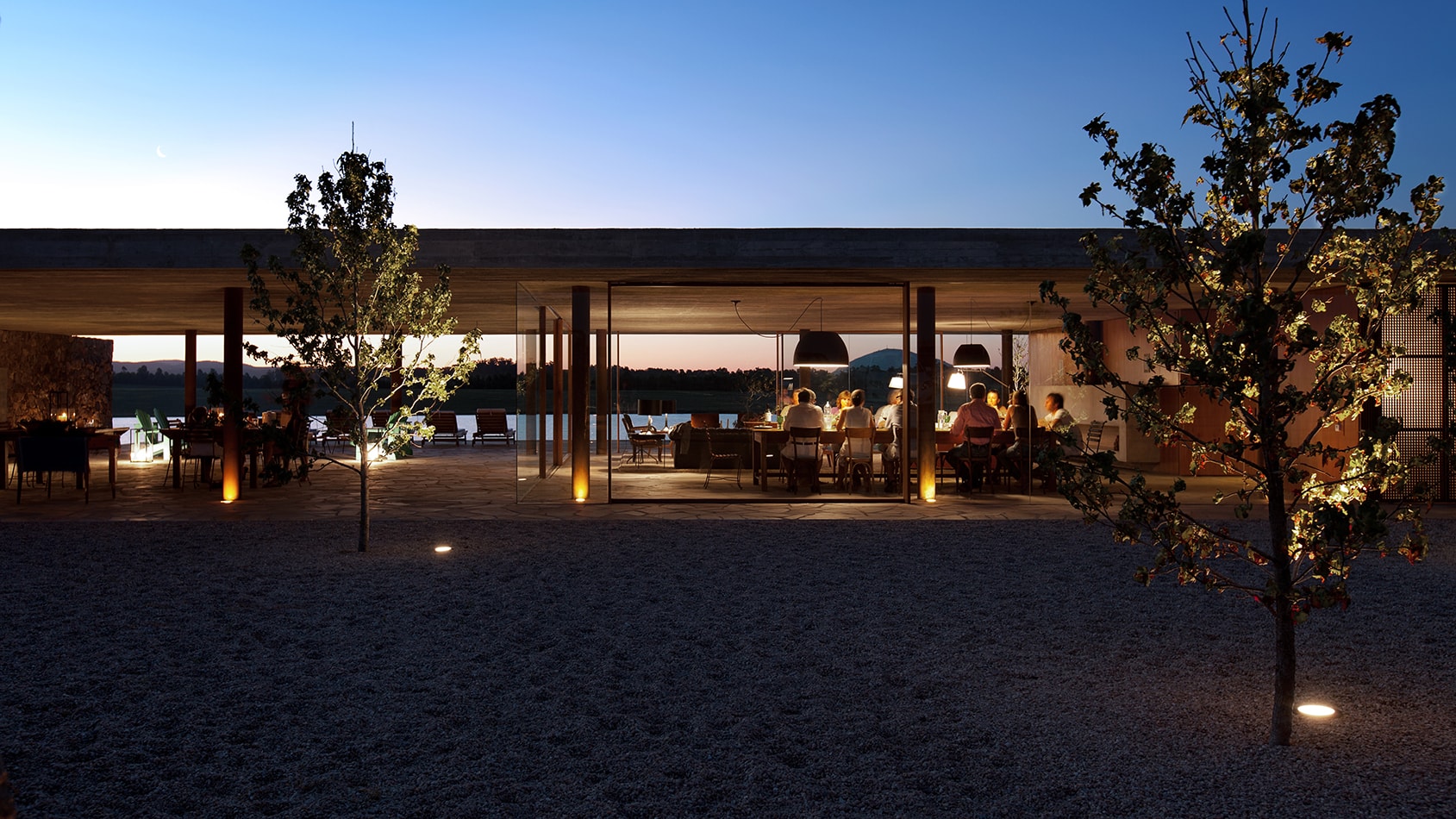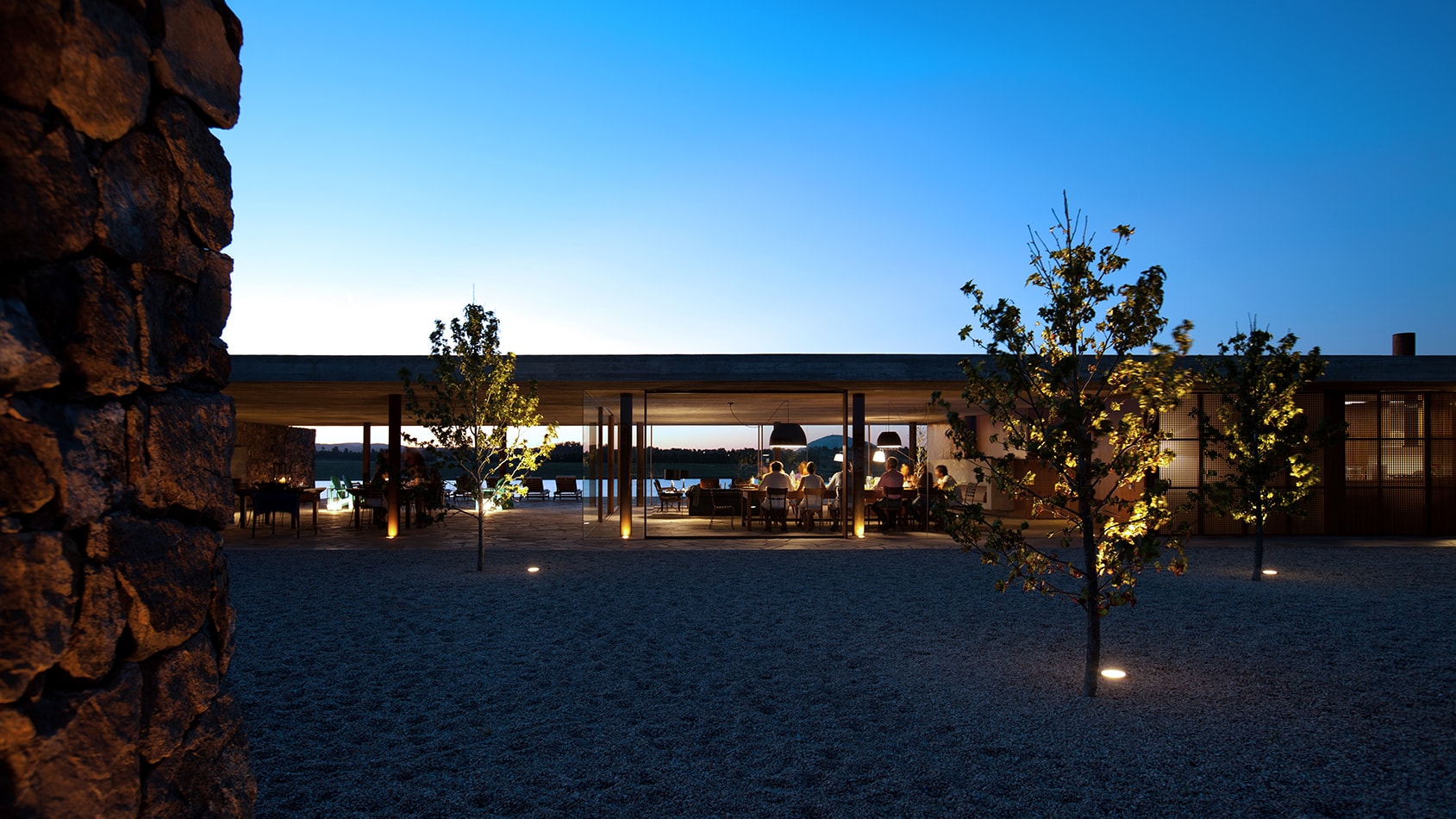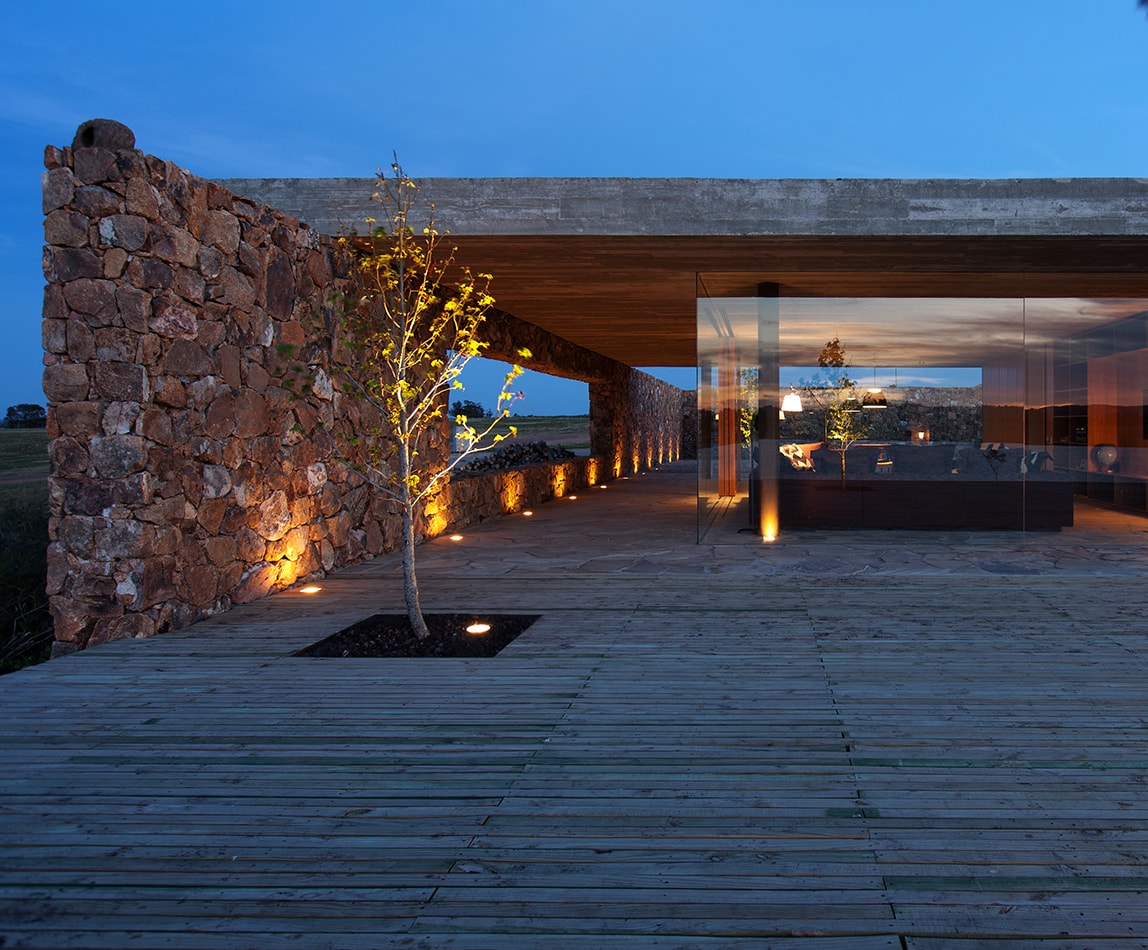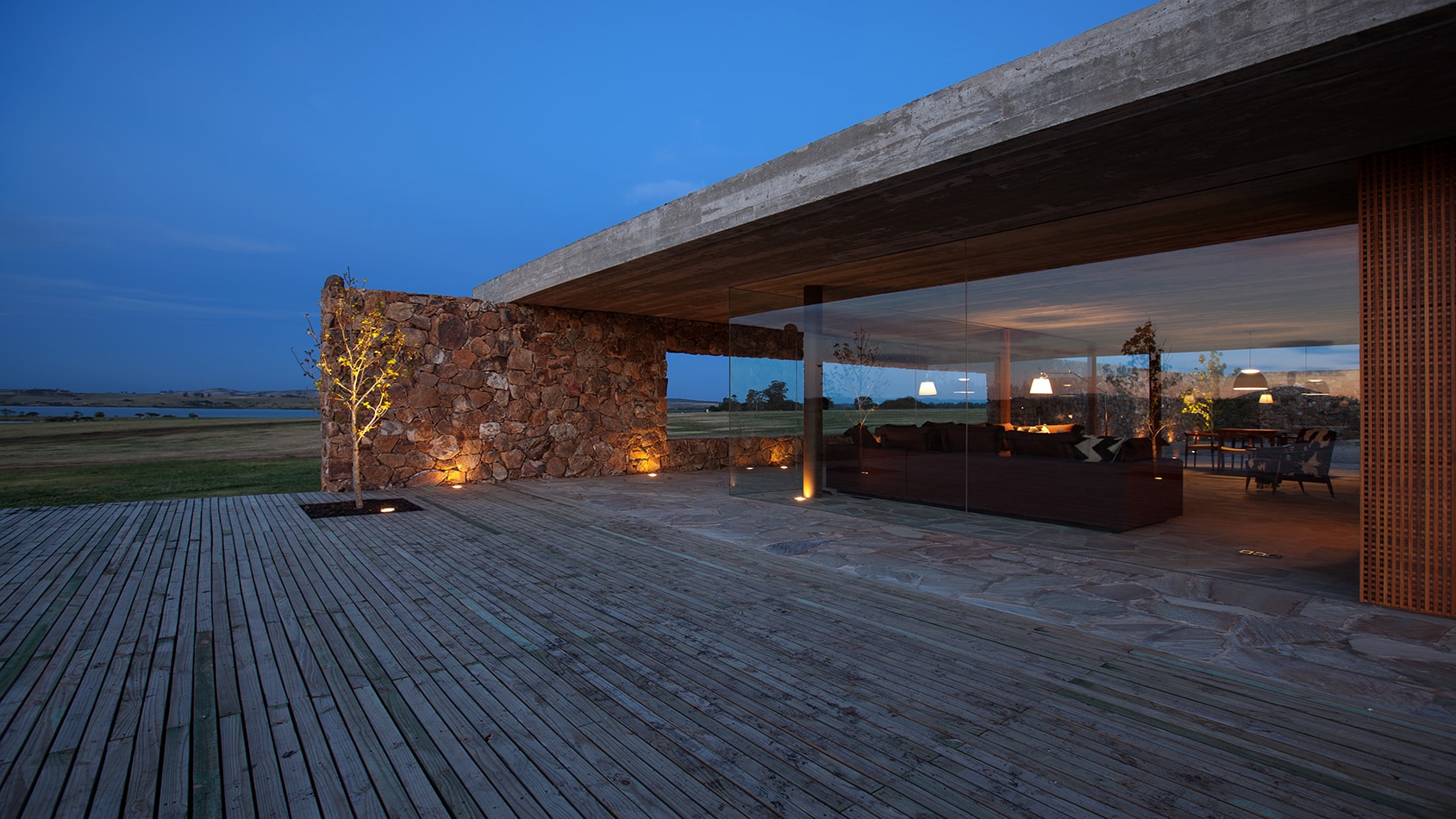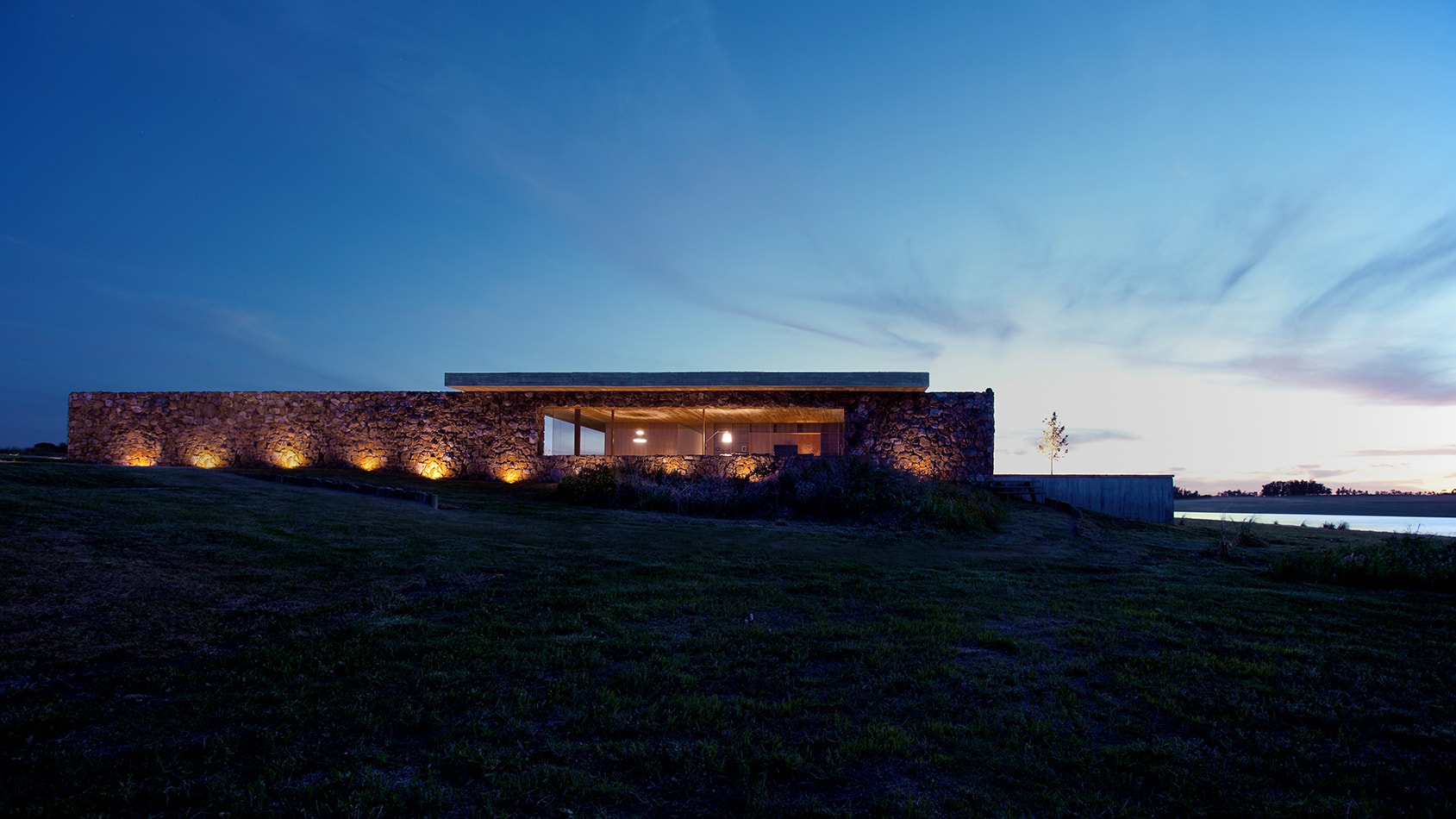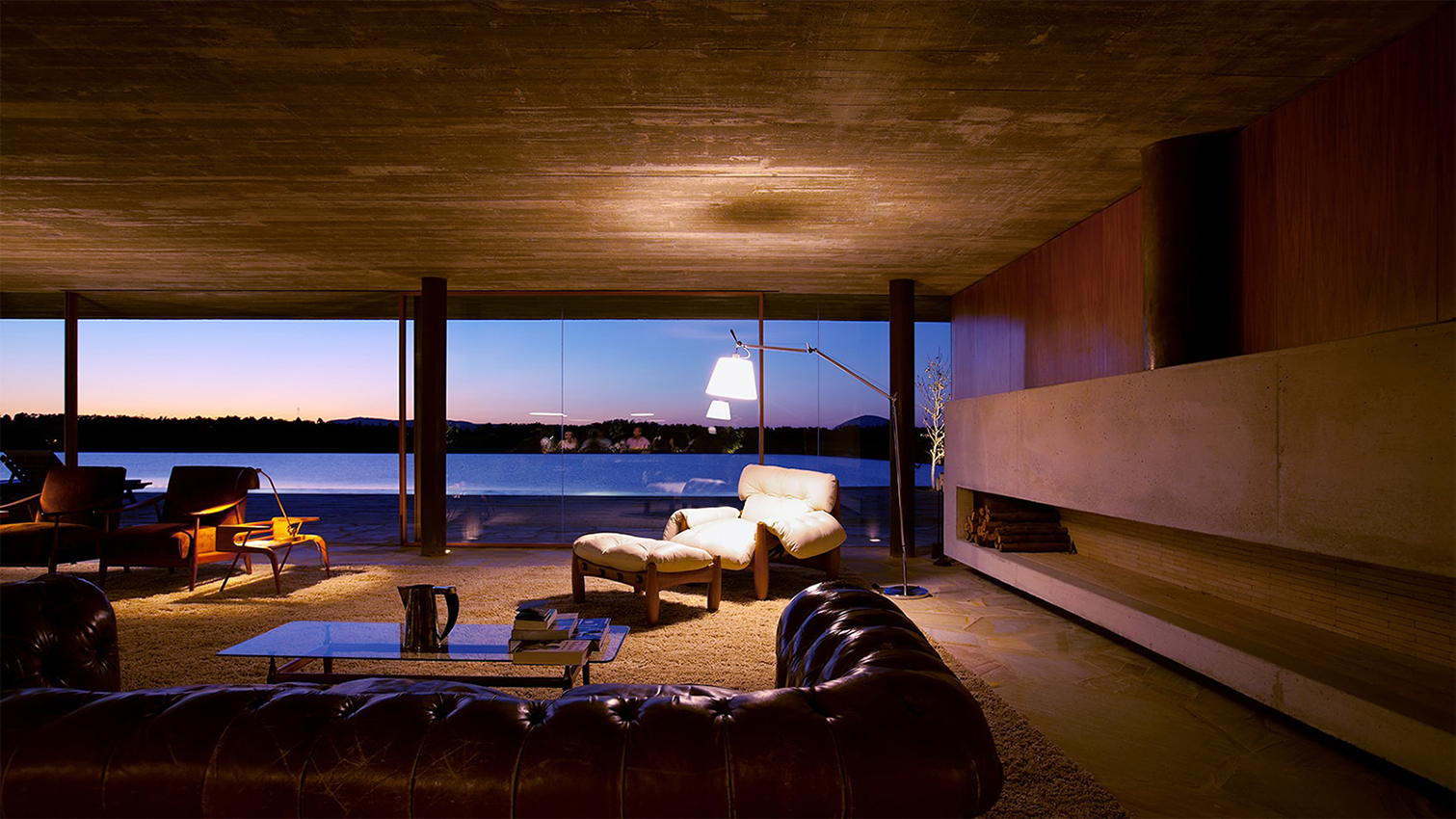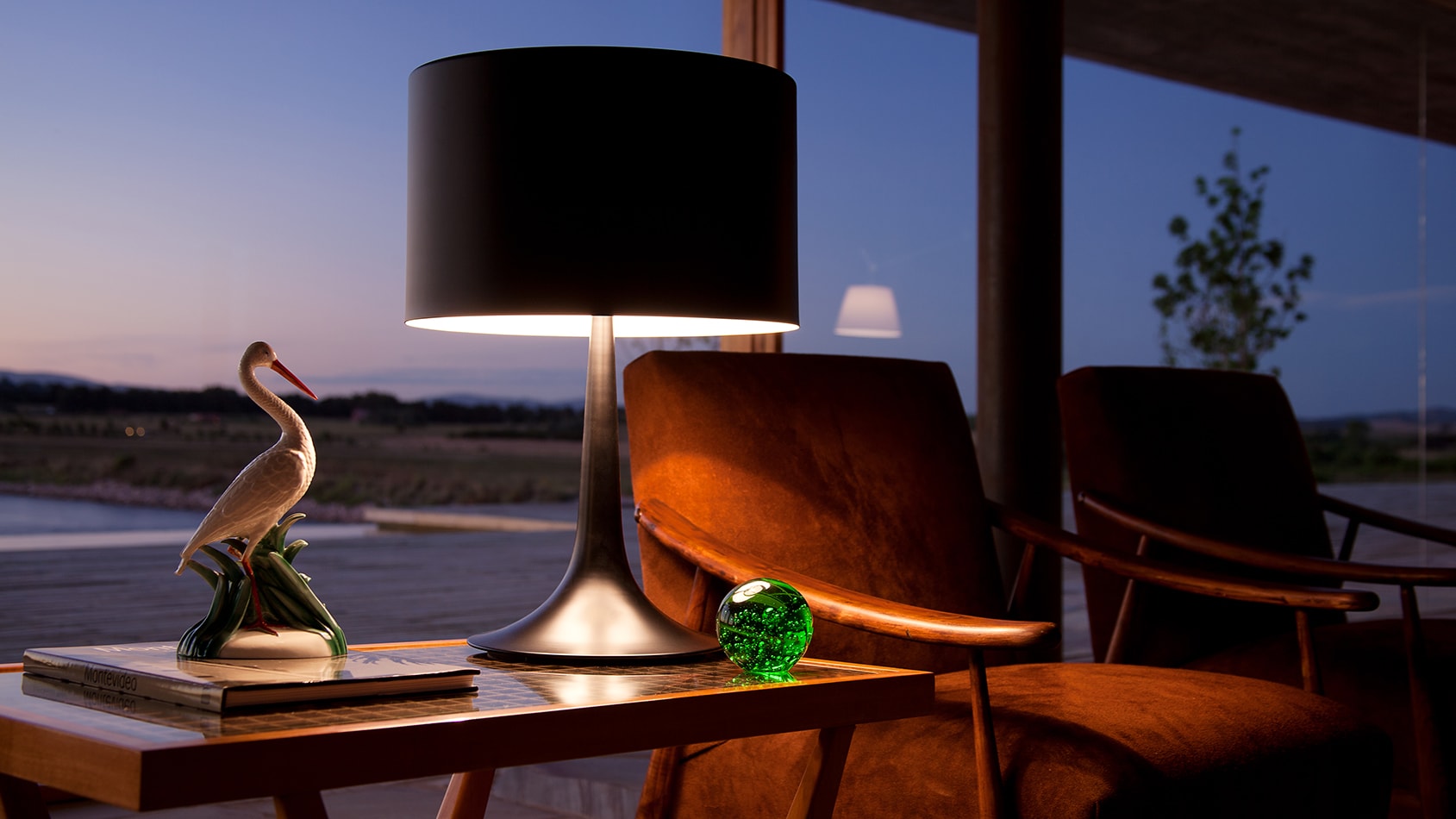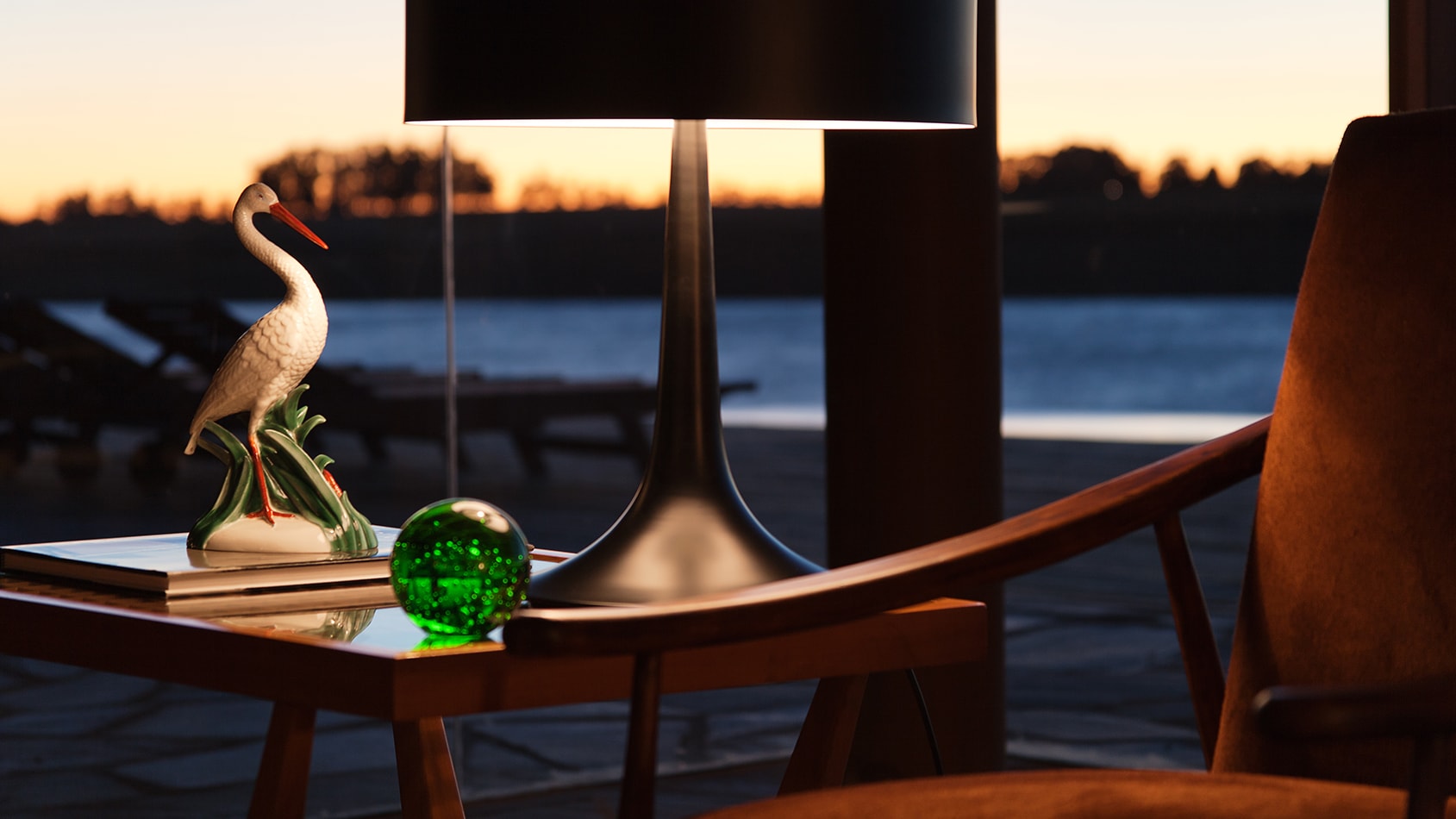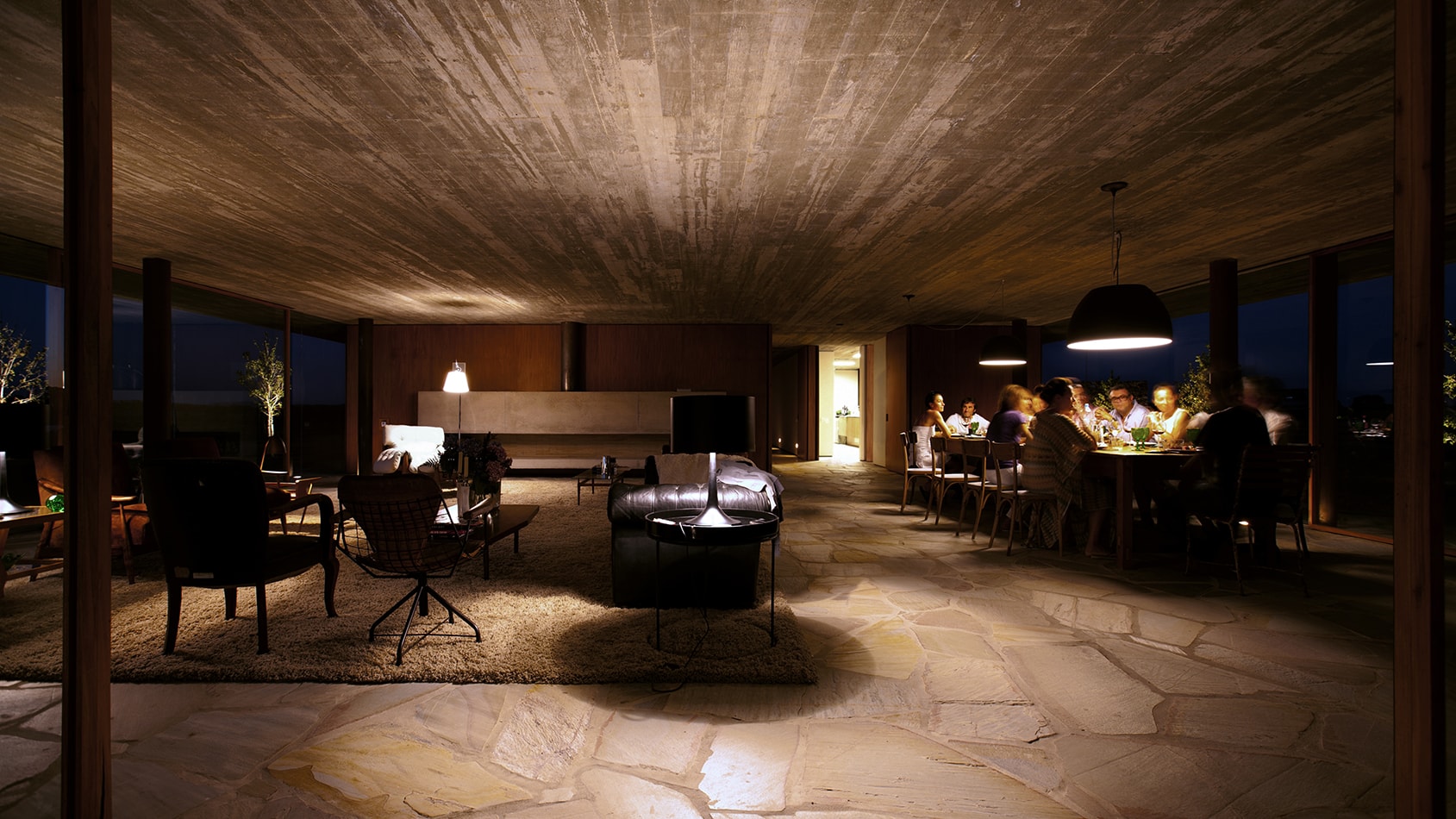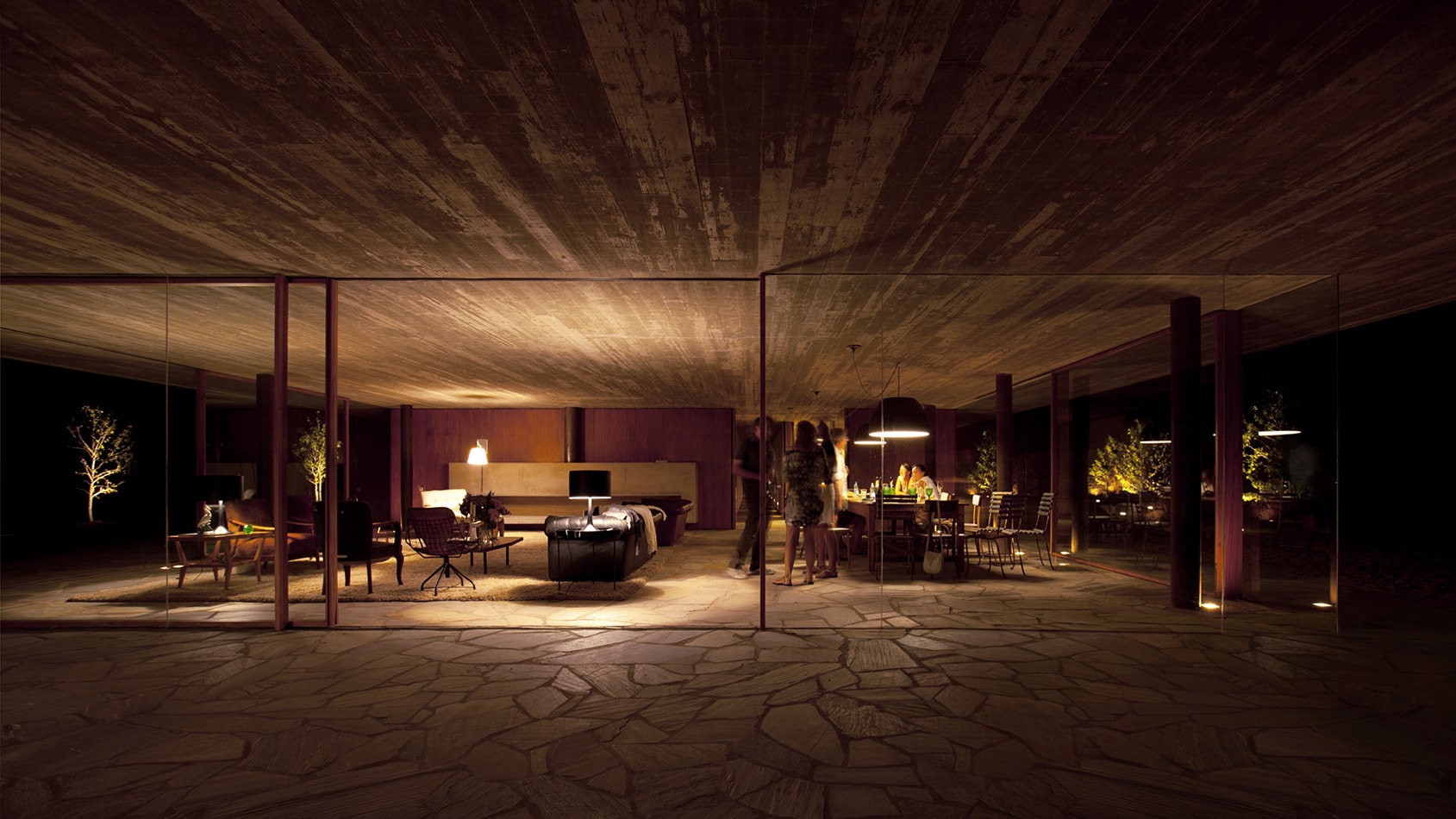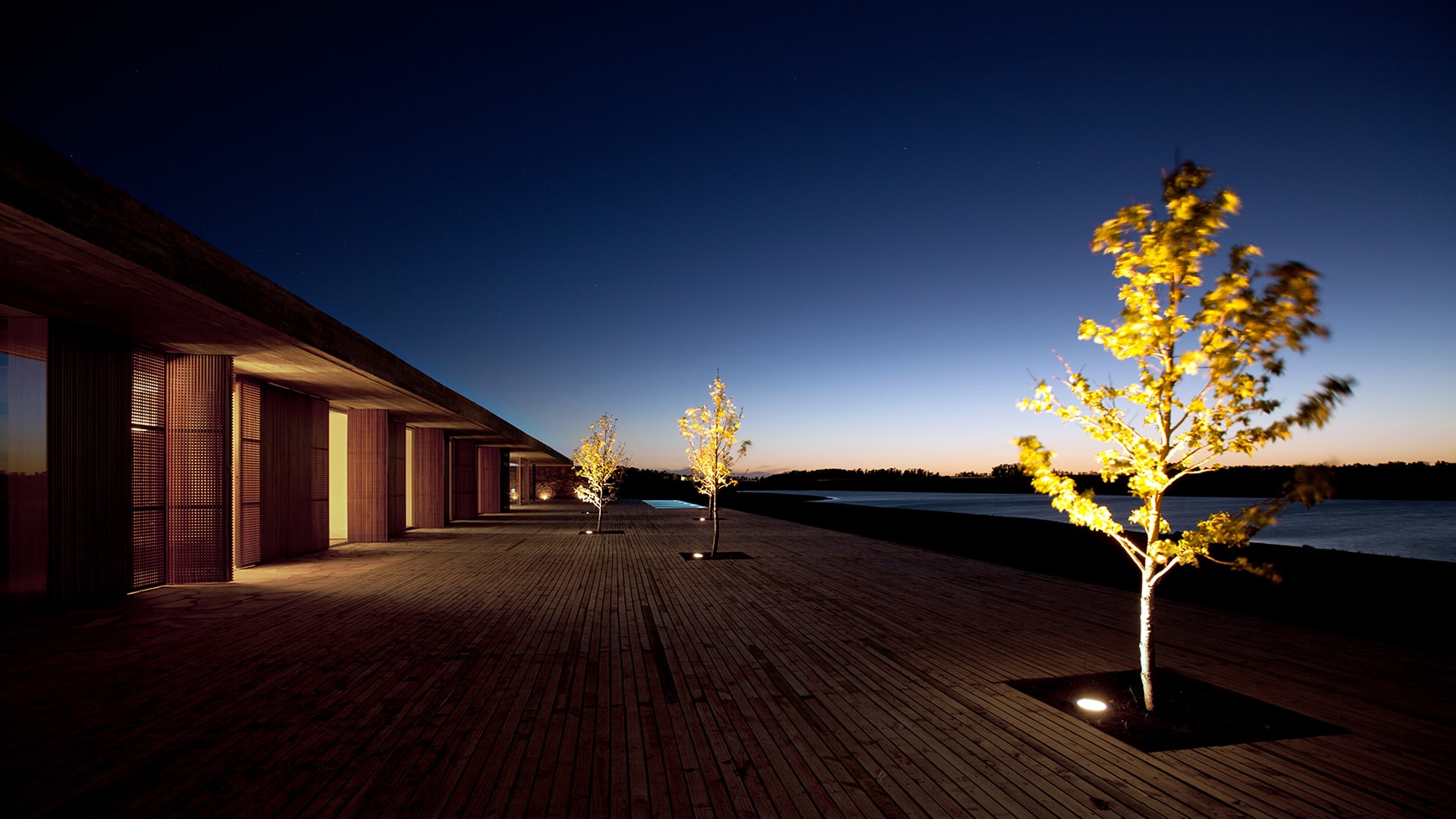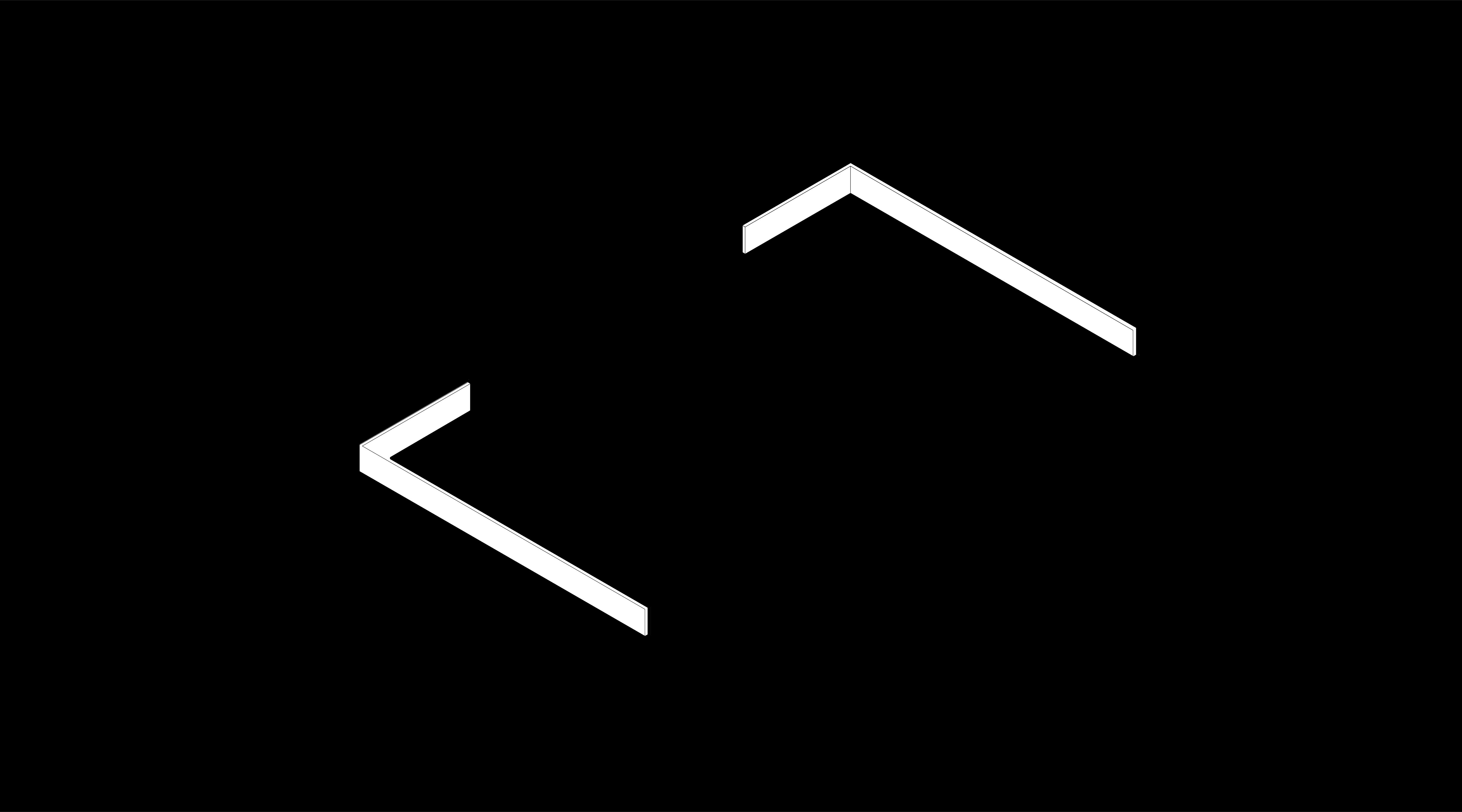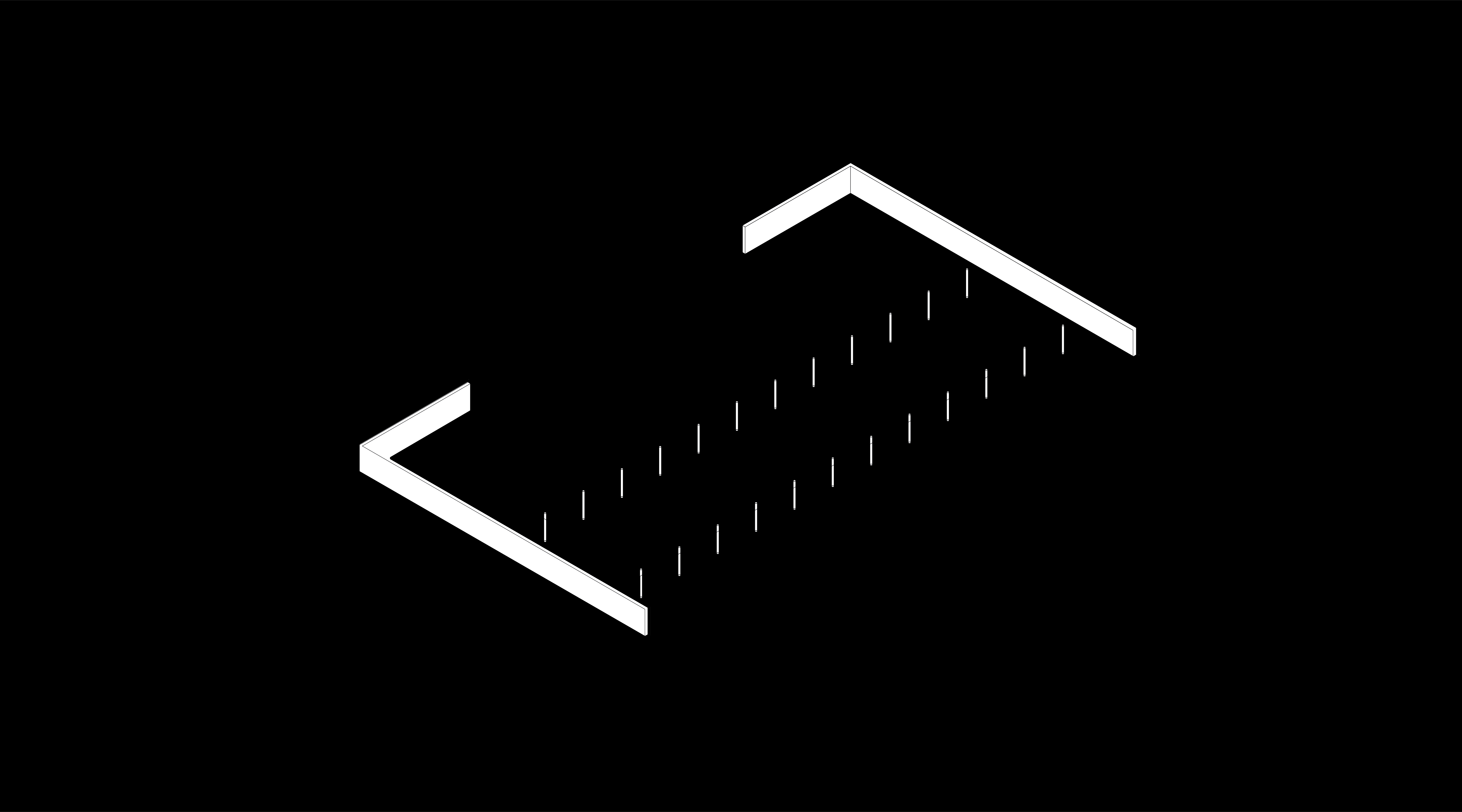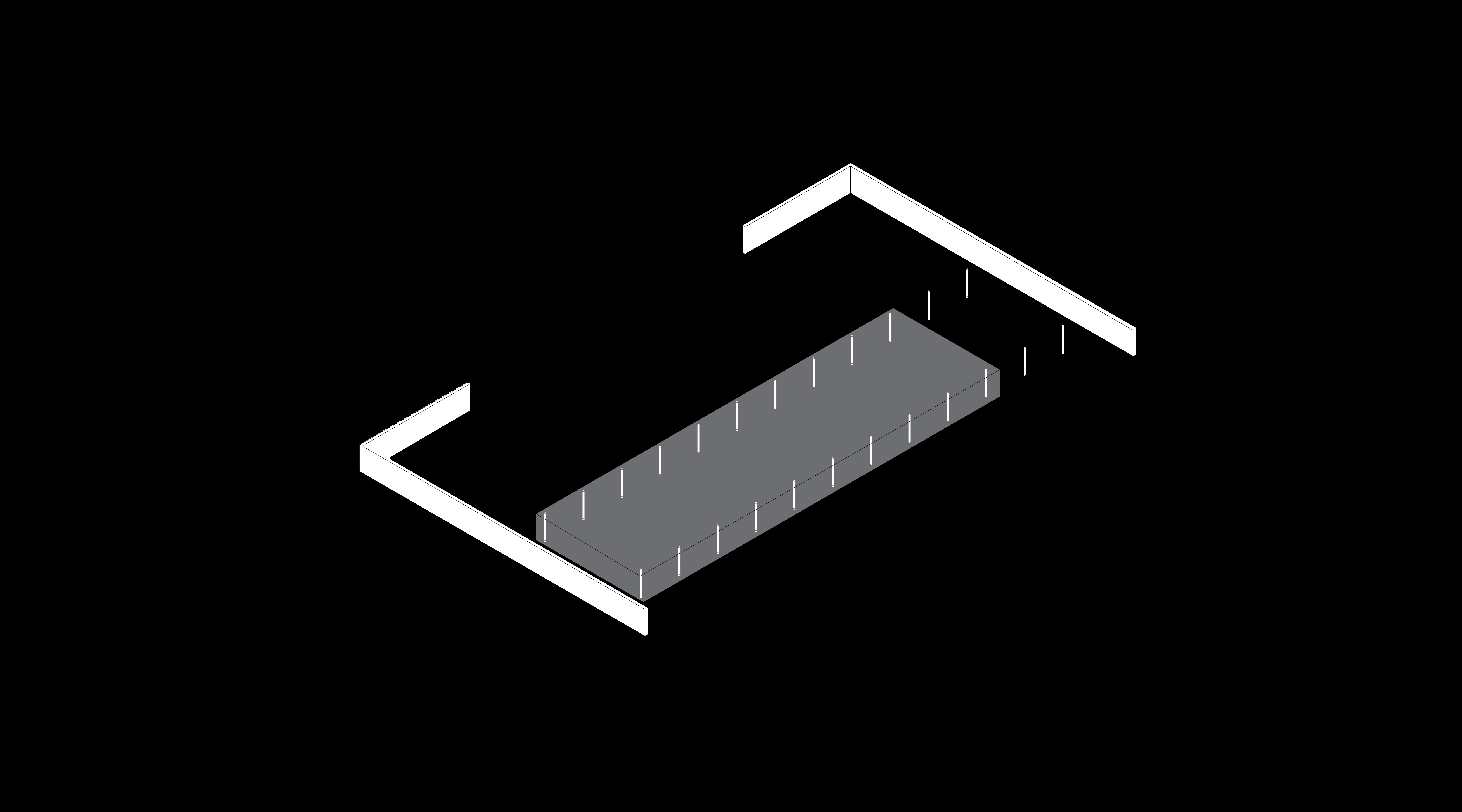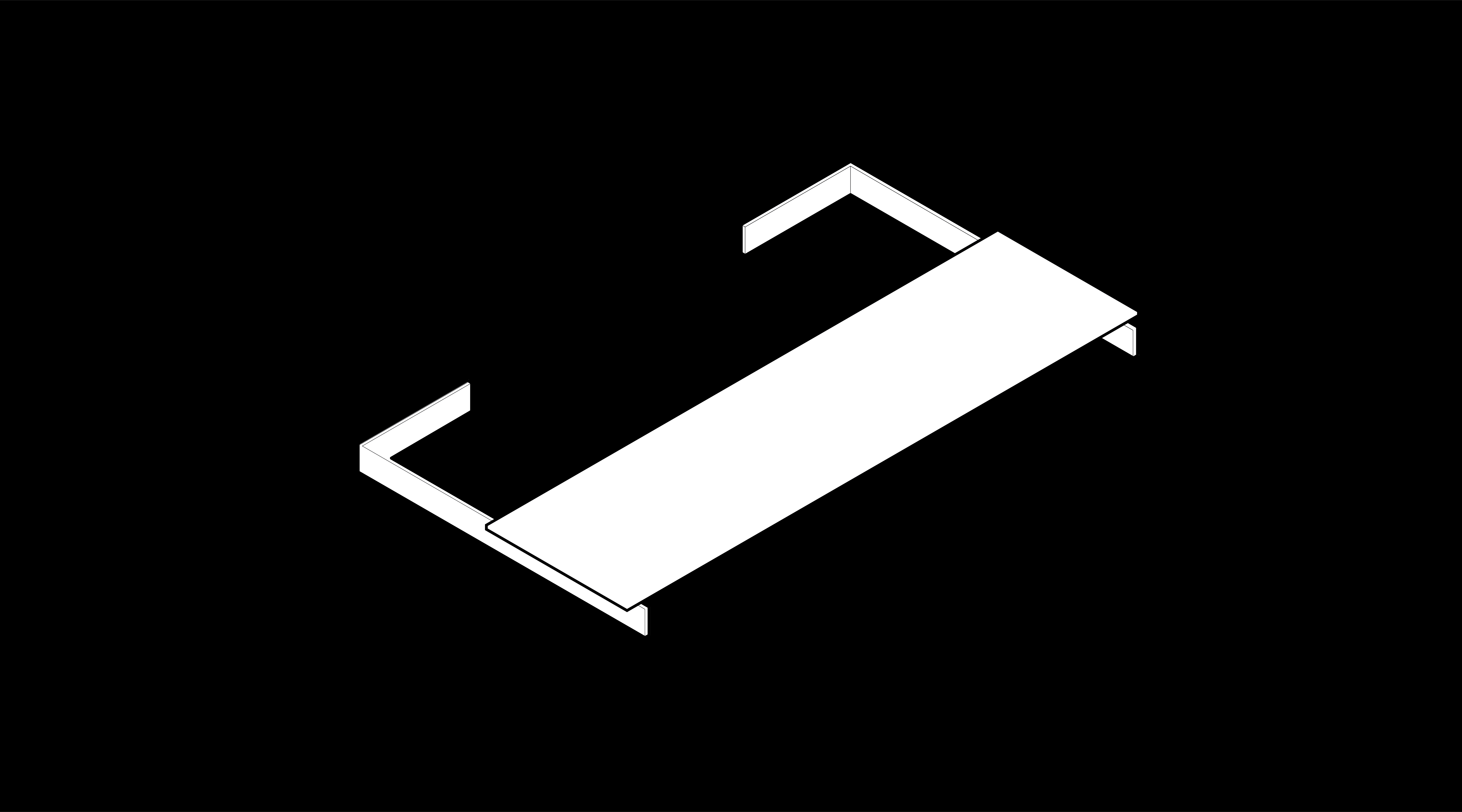Kogan’s work on movies during the beginning of his career left its heritage on his architectural projects as the preference for horizontal proportions and the scenic use of light. These principles also became fundaments of studio mk27 projects and are unfolded, for example, in the linearity and internal atmosphere of Punta House – located next to a reservoir, close to Punta del Este, Uruguay.
The open and bare site, a type of non-environment, imposed challenges in creating private and sheltered spaces. The one-story house built its own limits then and, on one side, opens to the view of the reservoir and, on the other, define the space with an internal courtyard circumscribed by walls made of local stones (‘piedras lajas’, also used on the floor).
A rational column grid supports a 42 cm-thick flat concrete slab and the program develops under this structural element: ‘voids’ shape social areas such as the living room; while ‘masses’ (the wooden box) host private spaces like bedrooms (facing the view), utilities and kitchen (facing the courtyard).
This project radicalizes horizontal proportion to the point where the house no longer has an external materiality (expressed by the relationship between façade height and length) and practically becomes a line in the landscape.
Gabriel Kogan
location> punta del´est . uruguay
project > september . 2008
completion > january. 2011
site area > 10.740 sqm
built area > 465 sqm
-
architecture and interior design > studio mk27
architect > marcio kogan
co-architect > suzana glogowski
interior design > diana radomysler
architecture team > beatriz meyer
interiors team > helena montanarini
communication team > mariana simas
-
contractor > cuentax
structure engineer > benedictis engenharia
-
photographer > reinaldo coser
Kogan’s work on movies during the beginning of his career left its heritage on his architectural projects as the preference for horizontal proportions and the scenic use of light. These principles also became fundaments of studio mk27 projects and are unfolded, for example, in the linearity and internal atmosphere of Punta House – located next to a reservoir, close to Punta del Este, Uruguay.
The open and bare site, a type of non-environment, imposed challenges in creating private and sheltered spaces. The one-story house built its own limits then and, on one side, opens to the view of the reservoir and, on the other, define the space with an internal courtyard circumscribed by walls made of local stones (‘piedras lajas’, also used on the floor).
A rational column grid supports a 42 cm-thick flat concrete slab and the program develops under this structural element: ‘voids’ shape social areas such as the living room; while ‘masses’ (the wooden box) host private spaces like bedrooms (facing the view), utilities and kitchen (facing the courtyard).
This project radicalizes horizontal proportion to the point where the house no longer has an external materiality (expressed by the relationship between façade height and length) and practically becomes a line in the landscape.
Gabriel Kogan





